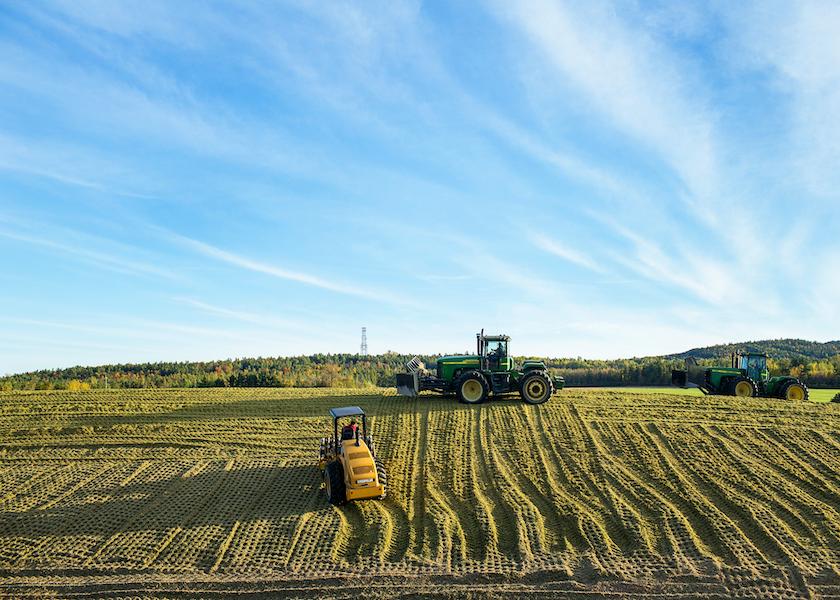Drive-over Piles Gaining Favor

Silage-storage methods have evolved over the years, with drive-over piles becoming the increasingly popular method of choice today.
Bill Mahanna, Global Nutritional Sciences Manager for Pioneer, said piles trump bunkers and bags for multiple reasons. Compared to bunkers, they are less permanent and more affordable to construct, as they require only an impermeable surface versus the need for concrete sidewalls.
They also provide for more flexibility in that you can size them to the volume of crop harvested, allowing for optimum face dimensions to match desired feed-removal rates. They also allow for independent storage of smaller-volume specialty crops such as BMR corn silage or cereals.
Feed segregation also can be managed with bags, but Mahanna said bags have a major draw-back in that feed can be highly variable. “With a bag, you’re stuck feeding discreet sections of feed from that particular part of the field, whereas piles can be shaved or faced for more consistent, blended feed day-to-day,” Mahanna explained.
He said that while bags are a very efficient storage system, they are relatively slow to fill and slow to feed out and also leave a lot of plastic waste to be dealt with.
For these reasons, Mahanna increasingly advises expanding dairies to choose drive-over piles, and to perfect their technique in building, packing, and sealing them. “I used to discourage piles because there would be about three feet of spoilage in the ‘tails’ around the perimeter,” he stated. “But now that we have oxygen-barrier film and L. buchneri inoculants, that problem can be alleviated.”
Mahanna said a well-built drive-over pile starts with a smooth, solid base of packed gravel, compacted lime, asphalt, or concrete, at a sufficient slope to allow good drainage. For safety reasons, the pile height should be no taller than the reach of the loader bucket or telehandler that will be removing it. The side slope then can be calculated, using a 1:3 ratio rule – one foot of rise for each three horizontal feet, such that a 12-foot high pile would be about 72 feet wide
“A slope any steeper won’t allow for proper weight distribution for uniform packing,” he advised. “Pile ends should have the same slope as the sides, so piles can be driven over from any direction.”
Mahanna also likes the equipment feed-out flexibility of drive-over piles. “If you don’t have a facer, you can face them sideways with a front-end loader without the interference of walls and still obtain uniform, blended feed.,” he noted.
The University of Wisconsin Dairy Forage Team has developed a number of tools to aid in the development and management of drive-over piles, including a Silage Pile Dimension Calculator, Silage Pile Density Calculator, and Silage Pile Capacity and Capital Cost Calculator.







